1991 Toyota Sera, a futuristic coupe that dared to be different, arrived on the scene with a unique design that captured attention and turned heads. Its gullwing doors, aerodynamic body, and sleek lines made it stand out from the crowd, promising a driving experience that was as exciting as its appearance.
The Sera was more than just a stylish car; it was a statement of individuality, a symbol of a time when automotive design was pushing boundaries and exploring new possibilities.
This Japanese-engineered coupe, aimed at a younger, more style-conscious audience, aimed to capture the spirit of the 1990s, a decade defined by technological advancements and a desire for something fresh and innovative. The Sera, with its unconventional design and advanced features, embodied this spirit perfectly, challenging traditional notions of what a sports car should be.
Introduction
The 1991 Toyota Sera, a two-door, two-seater coupe, was a unique and stylish entry in the Japanese automotive market. It was a bold statement from Toyota, showcasing their commitment to innovative design and engineering. While the Sera wasn’t a commercial success, it left a lasting impression as a futuristic and unconventional car.The Sera’s design was heavily influenced by the “bubble-era” design trends of the late 1980s and early 1990s.
This era was characterized by bold, futuristic designs and a fascination with aerodynamic forms. The Sera perfectly embodied this aesthetic with its distinctive, wedge-shaped body, large, wraparound windshield, and gullwing doors. The Sera’s target audience was young, affluent, and style-conscious individuals who appreciated innovative design and technology.
It was positioned as a sporty and luxurious coupe, appealing to those seeking a unique and eye-catching vehicle.
The Sera’s Design
The Sera’s design was a departure from the conventional coupes of the time. Its most distinctive feature was its gullwing doors, which opened upwards like the wings of a seagull. This design element not only added to the car’s futuristic appeal but also provided easy access to the cabin.
The doors were made of lightweight composite materials, further contributing to the Sera’s sporty and agile character.The Sera’s exterior featured a sleek, wedge-shaped body with a low, aerodynamic profile. The front end was dominated by a large, wraparound windshield that extended almost to the roofline.
This design element provided excellent visibility for the driver and passengers. The rear end featured a distinctive spoiler that was integrated into the trunk lid, adding to the car’s sporty appearance.
The 1991 Toyota Sera, with its distinctive butterfly doors and futuristic styling, was a head-turner in its time. While the Sera was a unique coupe, Toyota’s focus shifted towards more practical vehicles, culminating in the release of the robust 2007 Toyota Tacoma.
This truck, known for its reliability and off-road capabilities, stands in stark contrast to the Sera’s sleek design, highlighting Toyota’s ability to cater to diverse market demands. Despite their differences, both the Sera and the Tacoma showcase Toyota’s commitment to innovation and engineering excellence.
The Sera’s Interior
The Sera’s interior was designed to be both stylish and functional. The dashboard featured a futuristic, minimalist design with a central instrument cluster that was dominated by a large digital display. The seats were comfortable and supportive, and the interior materials were of high quality.The Sera’s interior was also notable for its innovative features.
The car featured a unique “electric sunroof” that could be opened and closed with the touch of a button. The sunroof was made of a transparent polycarbonate panel that was electronically controlled and could be adjusted to provide varying degrees of ventilation.
The Sera’s Powertrain
The Sera was powered by a 1.5-liter, four-cylinder engine that produced 105 horsepower. The engine was mated to a four-speed automatic transmission. The Sera’s engine was designed to be fuel-efficient and provide a smooth and responsive driving experience.The Sera’s suspension system was designed for a comfortable ride and handling.
The front suspension featured MacPherson struts, while the rear suspension featured a torsion beam axle. The Sera’s brakes were disc brakes at all four wheels.
The Sera’s Legacy
Despite its unique design and innovative features, the Sera was not a commercial success. It was discontinued in 1995 after only four years of production. The Sera’s failure was attributed to several factors, including its high price, its limited practicality, and its lack of a strong marketing campaign.Despite its commercial failure, the Sera remains a significant and memorable car.
It is a testament to Toyota’s willingness to experiment with innovative design and technology. The Sera’s influence can still be seen in the design of modern cars, particularly in the use of gullwing doors and other futuristic styling elements.
Technical Specifications and Performance
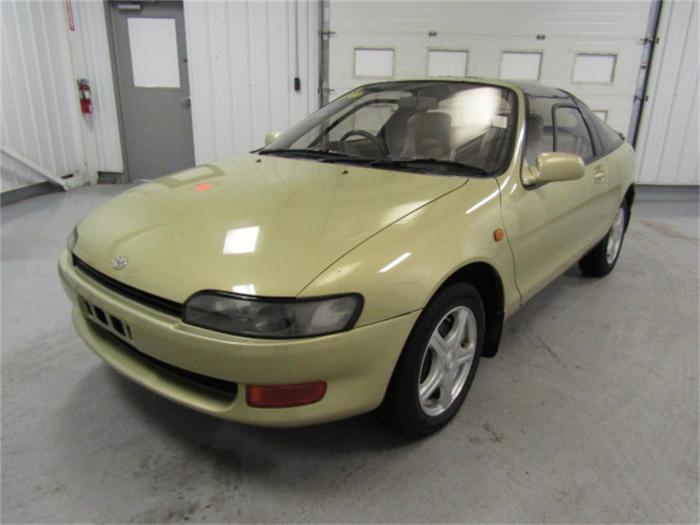
The 1991 Toyota Sera was a compact, two-door coupe that offered a unique blend of style and performance. It was powered by a 1.5-liter four-cylinder engine, but its lightweight design and aerodynamic body helped it achieve respectable performance figures.
Engine Specifications and Power Output
The Sera was powered by a 1.5-liter (1496 cc) four-cylinder engine, known as the 5E-FHE. This engine featured a dual overhead camshaft (DOHC) design, electronic fuel injection, and variable valve timing (VVT-i). The 5E-FHE produced 105 horsepower (78 kW) at 6000 rpm and 99 lb-ft (134 Nm) of torque at 4800 rpm.
Transmission Options
The Sera was available with two transmission options: a five-speed manual gearbox or a four-speed automatic gearbox. The manual transmission offered a more engaging driving experience, while the automatic provided convenience for everyday driving.
The 1991 Toyota Sera, with its futuristic styling and gullwing doors, was a bold departure from Toyota’s traditional designs. While the Sera was a sporty coupe, it’s interesting to note the stark contrast to the rugged and utilitarian 1970 Toyota Land Cruiser , a vehicle built for off-road adventures.
The Sera, on the other hand, was a testament to Toyota’s willingness to experiment with innovative design, aiming to capture the attention of a younger generation of drivers.
Performance Characteristics
The Sera’s lightweight design and aerodynamic body helped it achieve respectable performance figures. It could accelerate from 0 to 60 mph in around 9 seconds and had a top speed of around 115 mph. The car’s handling was also praised for its responsiveness and agility, thanks to its independent suspension and precise steering.
Comparison with Contemporary Sports Cars
While the Sera wasn’t a full-blown sports car, it offered a sporty driving experience that was comparable to other contemporary coupes of the time. Compared to the Honda CRX Si or the Mazda MX-5 Miata, the Sera was slightly slower but offered a more comfortable and refined ride.
Its unique design and futuristic styling also set it apart from its rivals.
Design and Features

The Toyota Sera, with its distinctive wedge-shaped design and futuristic styling, was a departure from the typical boxy shapes of the time. It embodied a forward-thinking approach to automotive design, showcasing a bold and aerodynamic aesthetic. The Sera’s design philosophy aimed to create a unique and engaging driving experience, capturing the spirit of innovation and excitement that characterized the early 1990s.The Sera’s design was a result of extensive wind tunnel testing and careful attention to detail.
Its sleek, aerodynamic profile minimized drag, contributing to fuel efficiency and enhanced performance. The use of lightweight materials, such as aluminum and composite plastics, further enhanced the Sera’s performance and handling characteristics.
Materials and Construction
The Sera’s body was constructed using a combination of materials, including steel, aluminum, and composite plastics. This mix of materials allowed Toyota to achieve a balance between strength, weight, and cost. The use of aluminum for the hood, doors, and fenders contributed to the Sera’s lightweight construction, enhancing its agility and fuel efficiency.The Sera’s distinctive gullwing doors, a defining feature of its design, were made of lightweight aluminum.
These doors, hinged at the roofline, provided a dramatic entrance and exit, adding to the Sera’s futuristic appeal. The use of composite plastics for various body panels helped to further reduce weight and improve fuel economy.
Unique Features
The Sera offered a range of unique features that enhanced its driving experience and appeal. The most prominent feature was its distinctive gullwing doors, which provided a dramatic and convenient way to enter and exit the vehicle. The doors were designed to open upward and outward, allowing for easy access to the cabin, even in tight parking spaces.
The Sera’s interior featured a futuristic design with a driver-oriented cockpit. The dashboard was designed to be ergonomically friendly, with all controls within easy reach of the driver. The seats were comfortable and supportive, providing a pleasant driving experience.The Sera also featured a number of innovative features, such as a digital instrument cluster and a compact steering wheel.
These features contributed to the car’s sporty and modern feel.
- Gullwing Doors:The Sera’s signature feature, these doors opened upwards and outwards, providing a dramatic and convenient way to enter and exit the vehicle. This design also offered a unique and stylish appearance.
- Digital Instrument Cluster:The Sera’s digital instrument cluster displayed information such as speed, engine RPM, and fuel level in a clear and concise manner. This futuristic feature added to the car’s modern feel.
- Compact Steering Wheel:The Sera’s compact steering wheel was designed to provide a sporty and responsive driving experience. It offered a more direct connection to the road, enhancing the driver’s engagement with the vehicle.
- Ergonomic Interior:The Sera’s interior was designed to be driver-focused, with all controls within easy reach. The seats were comfortable and supportive, ensuring a pleasant driving experience.
Market Reception and Legacy
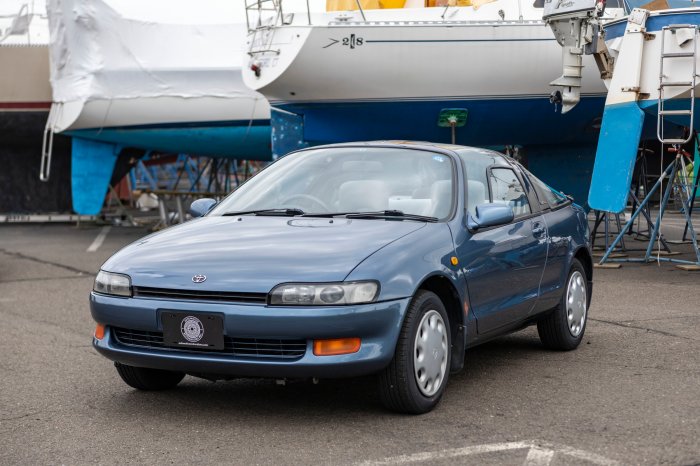
The Toyota Sera, with its distinctive design and unique features, garnered mixed reactions upon its release. While it received praise for its innovative styling and engineering, its limited practicality and relatively high price tag ultimately hindered its commercial success. Despite its short lifespan, the Sera has left a lasting impression on automotive enthusiasts and continues to hold a special place in Toyota’s history.
Initial Reception and Sales Performance, 1991 Toyota Sera
The Sera’s unconventional design, featuring butterfly doors and a futuristic aesthetic, generated significant buzz upon its launch in 1990. The car was initially well-received by automotive journalists and enthusiasts, who lauded its distinctive styling and advanced technology. However, its high price point and limited practicality ultimately hampered its sales success.
- The Sera was priced significantly higher than other Toyota models, making it a less accessible option for budget-conscious buyers.
- Its small size and lack of rear passenger space limited its practicality, especially for families or those seeking a more spacious vehicle.
- The Sera’s unconventional design, while appealing to some, alienated others who preferred more traditional and practical cars.
Despite its initial appeal, the Sera’s sales figures remained modest throughout its production run. Its limited practicality and high price tag ultimately made it a niche product, primarily appealing to enthusiasts and those seeking a unique and stylish vehicle.
Cultural Significance and Legacy
Despite its commercial limitations, the Sera has left a lasting impact on automotive culture. Its distinctive design, featuring butterfly doors and a futuristic aesthetic, has earned it a dedicated following among enthusiasts. The Sera’s innovative features, such as its retractable headlights and lightweight construction, have also contributed to its legacy.
- The Sera’s distinctive design has inspired numerous aftermarket modifications and customizations, further solidifying its place in automotive culture.
- Its unique engineering features, such as its lightweight construction and advanced suspension system, have served as inspiration for subsequent Toyota models.
- The Sera’s limited production run and unique design have made it a sought-after collectible car, with its value appreciating over time.
The Toyota Sera may not have achieved commercial success, but it remains a testament to Toyota’s innovative spirit and its willingness to explore unconventional design and engineering solutions. Its distinctive styling, unique features, and dedicated following ensure that the Sera will continue to be remembered as a landmark vehicle in Toyota’s history.
Comparisons and Alternatives
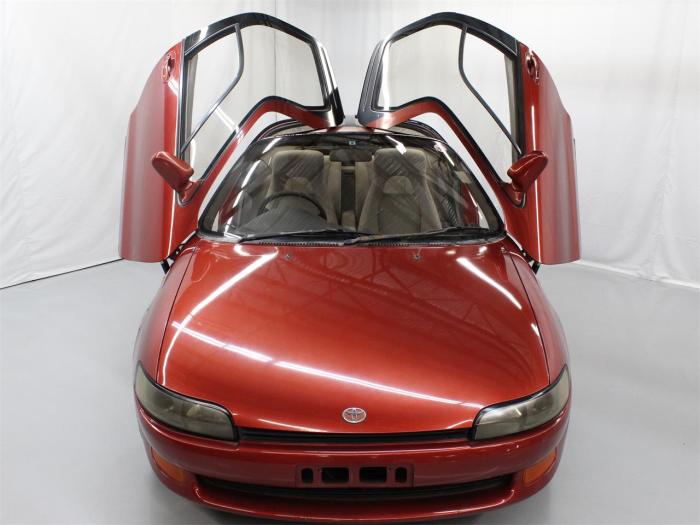
The Toyota Sera, with its unique design and innovative features, stood out in the sports car market of the early 1990s. However, it faced competition from established players and emerging contenders. Understanding its strengths and weaknesses against these alternatives provides a clearer picture of its place in the automotive landscape.
Comparison with Contemporary Sports Cars
The Sera competed against a diverse range of sports cars and coupes during its production years.
- Mazda MX-5 Miata:The Miata, with its lightweight design and engaging handling, offered a more traditional roadster experience. While the Sera boasted a more futuristic design, the Miata’s affordability and driving dynamics made it a popular choice. The Miata’s open-top design appealed to a different target audience than the Sera’s enclosed cabin.
The 1991 Toyota Sera was a bold departure for the Japanese automaker, offering a futuristic design with its distinctive gullwing doors. While it shared the same platform as the 1990 Toyota Starlet , the Sera’s styling and overall character were vastly different, aiming for a more sporty and modern feel.
The Sera’s unique design and engine options made it a popular choice for enthusiasts seeking something out of the ordinary.
- Honda CRX:The CRX, known for its fuel efficiency and sporty handling, presented a more practical and affordable alternative to the Sera. While the Sera emphasized style and innovative features, the CRX focused on everyday usability and performance.
- Nissan 240SX:The 240SX, a popular choice for drifting enthusiasts, offered a more powerful and rear-wheel-drive experience. While the Sera prioritized unique styling and innovative features, the 240SX catered to a different type of driver seeking raw performance and handling.
Potential Alternatives
Several other vehicles, while not direct competitors, offered alternatives to the Sera based on specific aspects.
- Honda NSX:The NSX, with its advanced technology and supercar performance, represented a higher-end alternative. While the Sera was a more affordable option, the NSX offered a level of sophistication and performance unmatched by the Sera.
- Toyota MR2:The MR2, a mid-engined sports car, provided a more focused driving experience. While the Sera featured a unique design, the MR2 offered a more conventional sports car layout with a focus on performance.
- Subaru SVX:The SVX, a luxury coupe with a distinctive design, competed in a similar market segment. While the Sera emphasized futuristic styling, the SVX offered a more sophisticated and luxurious approach.
Strengths and Weaknesses Compared to Competitors
The Sera offered unique strengths and faced specific challenges compared to its competitors.
- Strengths:
- Unique Design:The Sera’s distinctive gullwing doors and futuristic styling set it apart from the competition.
- Innovative Features:The Sera’s electronic retractable headlights and electronically controlled engine contributed to its unique appeal.
- Practicality:The Sera’s compact size and relatively spacious interior made it a practical choice for everyday driving.
- Weaknesses:
- Limited Performance:The Sera’s 1.5-liter engine offered modest power compared to some competitors.
- Reliability Concerns:The Sera’s complex technology and unusual design contributed to some reliability issues.
- Limited Production Run:The Sera’s relatively short production run made it less common and less accessible than some competitors.
Owner Experiences and Reviews: 1991 Toyota Sera
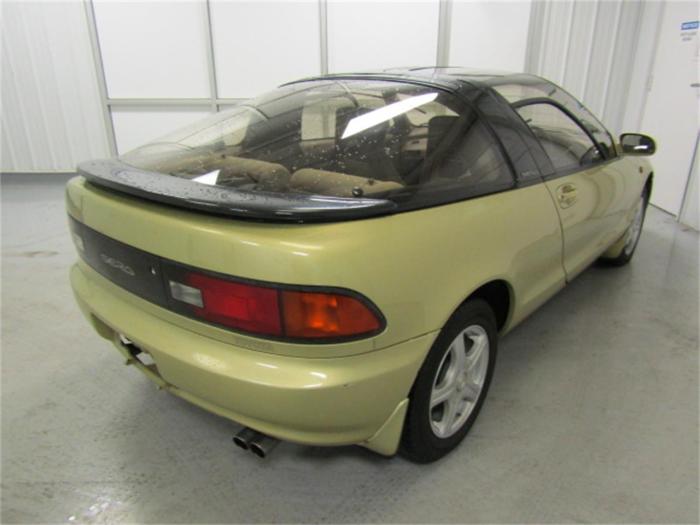
The Toyota Sera, with its distinctive styling and unique features, has attracted a dedicated following of enthusiasts. While it may not be as widely recognized as some of Toyota’s other models, Sera owners have a lot to say about their experiences with this unconventional coupe.
Online forums, car review websites, and social media groups offer a wealth of information about the Sera’s strengths and weaknesses, providing insights into the real-world ownership experience.
Common Praises and Criticisms
Sera owners often praise the car’s distinctive styling and its fun-to-drive nature. The unique gullwing doors, while not always practical, are a conversation starter and add to the car’s appeal. Many appreciate the car’s nimble handling and responsive engine, making it enjoyable for spirited driving.
The car’s compact size and relatively light weight contribute to its agility and make it easy to maneuver in urban environments.However, the Sera also receives its share of criticism. Some owners find the car’s interior to be cramped and lacking in modern amenities.
The lack of rear legroom and limited cargo space can be a drawback for those seeking a practical daily driver. While the engine is responsive, it can be somewhat underpowered for highway driving, especially when carrying passengers or cargo. Reliability is another concern, with some owners reporting issues with the car’s electrical system, engine components, and bodywork.
Recurring Issues and Problems
- Electrical System Issues:Sera owners have reported various electrical problems, including issues with the door opening mechanism, the power windows, and the dashboard gauges. The car’s complex wiring harness and numerous electrical components can be susceptible to malfunctions, especially with age.
- Engine Problems:While the 1.5-liter engine is generally reliable, some owners have reported issues with the engine’s timing belt, fuel injectors, and spark plugs. Regular maintenance and preventative measures can help minimize these problems.
- Bodywork Issues:The Sera’s lightweight construction and use of composite materials can make it susceptible to bodywork damage. The gullwing doors, while stylish, are prone to misalignment and can be difficult to repair.
- Parts Availability:As a discontinued model, finding parts for the Sera can be challenging. Many parts are no longer available through Toyota dealerships, and sourcing them from aftermarket suppliers can be expensive.
Historical Context and Influences

The Toyota Sera, a futuristic and unconventional coupe, emerged during a period of significant change and innovation in the automotive industry. Its development and release coincided with a surge in interest in aerodynamic design, lightweight materials, and advanced technologies. This era saw the rise of iconic sports cars like the Honda NSX and Mazda MX-5, which challenged traditional automotive norms and pushed the boundaries of performance and style.The Sera’s design and engineering reflected the automotive trends and innovations of the early 1990s.
It incorporated several groundbreaking features that were considered cutting-edge at the time, showcasing Toyota’s commitment to exploring new possibilities in automotive design.
Influences on the Sera’s Design and Technology
The Sera’s design was heavily influenced by the burgeoning trend of aerodynamic efficiency in the early 1990s. The car’s distinctive butterfly doors, a design feature that had been explored by other manufacturers but never fully realized, were not only visually striking but also contributed to its aerodynamic profile.The Sera’s use of lightweight materials, such as aluminum and plastic, was another notable influence.
This approach, inspired by the burgeoning trend of lightweight construction in sports cars, helped to reduce the car’s weight and improve its fuel efficiency.The Sera’s design was also influenced by the growing popularity of concept cars, which served as showcases for innovative design ideas and technological advancements.
The Sera’s futuristic styling, with its sleek lines and unconventional features, echoed the spirit of these concept cars, blurring the lines between reality and fantasy.
The Sera’s Reflection of Early 1990s Automotive Trends
The Sera’s development and release coincided with a period of significant technological advancements in the automotive industry. The early 1990s saw the introduction of new technologies such as anti-lock braking systems (ABS), electronic stability control (ESC), and driver airbags, which significantly enhanced vehicle safety.The Sera incorporated some of these emerging technologies, demonstrating Toyota’s commitment to incorporating advanced safety features into its vehicles.
It was equipped with a driver’s airbag, ABS, and a sophisticated suspension system that provided a comfortable and responsive ride.The Sera’s design and technology also reflected the growing emphasis on fuel efficiency and environmental consciousness in the early 1990s. The car’s lightweight construction, aerodynamic profile, and fuel-efficient engine helped to reduce its environmental impact, aligning with the emerging trend of sustainable transportation.
Cultural Impact and Legacy
While the Sera didn’t achieve the widespread popularity of other iconic Japanese sports cars like the Honda NSX or the Mazda MX-5 Miata, it has nonetheless carved a niche for itself in automotive history and pop culture. Its unique design and technological advancements continue to be appreciated by enthusiasts, making it a symbol of a specific era in automotive design and innovation.
Appearances in Popular Culture
The Sera’s distinctive design and futuristic appeal made it a popular choice for appearances in various forms of media. It was featured in several Japanese television dramas and commercials, reflecting its status as a stylish and modern vehicle during the early 1990s.
Its appearance in the 1992 Japanese film “Tokyo Decadence” (Tokyo no Yoru) further cemented its place in popular culture, showcasing its sleek silhouette and unique features in a cinematic context.
Restoration and Preservation
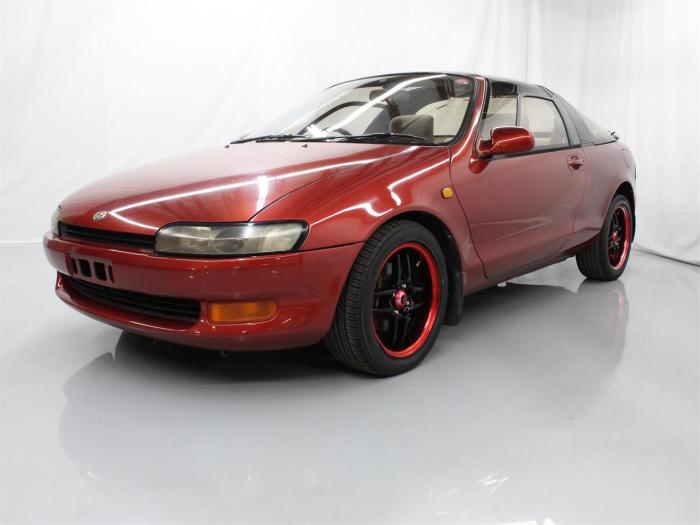
The Toyota Sera, with its distinctive design and limited production run, has gained a dedicated following among enthusiasts and collectors. This has led to a growing interest in restoring and preserving these unique vehicles, ensuring their continued presence on the roads and in car collections.
Availability and Market Value
The Sera’s limited production and its status as a niche model have made it a sought-after collector’s car. Finding a well-maintained example can be challenging, as many have succumbed to the ravages of time or been modified beyond recognition. However, dedicated collectors and enthusiasts continue to seek out these vehicles, and prices have steadily risen in recent years, particularly for well-preserved or restored examples.
The value of a Sera depends on its condition, mileage, modifications, and overall desirability.
Challenges and Rewards of Restoration
Restoring a 1991 Toyota Sera presents both challenges and rewards. The car’s unique design and use of specialized components can make sourcing parts difficult and expensive. The intricate gullwing doors require careful attention during restoration to ensure proper alignment and functionality.
However, the rewards of restoring a Sera are significant. The car’s distinctive appearance and driving experience make it a unique and enjoyable vehicle to own.
Resources and Communities
A dedicated community of Sera enthusiasts exists online and in person, providing support and resources for owners and restorers. Online forums, social media groups, and specialized websites offer a platform for sharing information, exchanging parts, and connecting with other enthusiasts.
Local car clubs and meetups provide opportunities for owners to showcase their vehicles, share experiences, and learn from each other.
End of Discussion
The 1991 Toyota Sera, despite its limited production run and eventual discontinuation, remains a captivating example of automotive innovation and design. It carved its own niche in the automotive landscape, showcasing a bold vision for the future of sports cars.
While its legacy might not be as extensive as some of its contemporaries, the Sera continues to hold a special place in the hearts of enthusiasts who appreciate its unique blend of style, performance, and technological advancements.